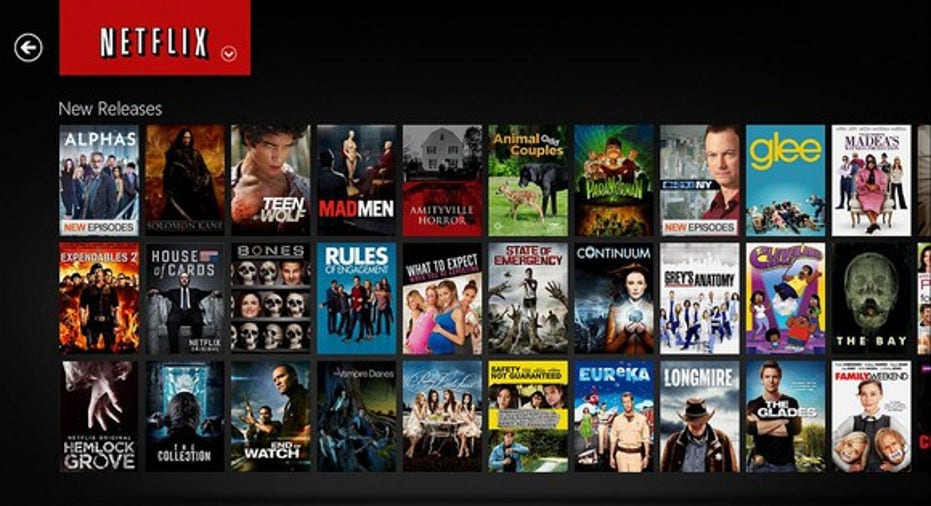What Will Netflix's Material Profits Look Like in 2017?

For years,Netflix(NASDAQ: NFLX) methodically expanded overseas, racking up losses as it took the steps necessary to enter new markets. It negotiated with governments, spent heavily on marketing, and collected locally relevant content.
Image Source: Motley Fool.
The years-long expansion came to an abrupt end this January when Netflix suddenly announced it had launched in 130 countries simultaneously. CEO Reed Hastings has since promised multiple times that his company would deliver "material profits" starting in 2017. Management said in its recent report it would "start generating material global profits in 2017 and beyond, by marching up operating margins steadily for many years."
Now streaming profits
Netflix has long been generating substantial profits from the U.S. market. For more than a year, Netflix has been targeting a 40% contribution margin for domestic streaming, meaning it will keep 40% of its revenue after content and marketing expenses.
As U.S. subscribership has grown and Netflix "ungrandfathered" its prices this year, contribution margins have rapidly increased. They reached 36.4% in the third quarter and the company has forecast 36.9% in the current quarter. In Q3 2015, the domestic contribution margin was just 32.4%, and the subsequent rapid growth is a sign of the power of Netflix's subscription model.
The company's DVD division, while in decline, continues to churn out solid profits as well. Contribution margins from its DVD segments are above 50%, and the segment is on track to produce $250 million in contribution profit this year. That's much less than the near $2 billion expected from domestic streaming, but too much to ignore.
The international segment has been the biggest weight on the company in recent years. Foreign markets are set to account for a loss of about $300 million this year, however, margins are improving. In the Q3 2015, the international contribution margin was -13.1%. That narrowed to -8% in the most recent quarter, and that change came from an increase in revenue as contribution loss held between $68 million and $69 million. For 2016, Netflix is expecting a profit of just $0.40 a share.
What 2017 may hold
Netflix's quarter-to-quarter results are notoriously volatile, but extrapolating from the current year we can get a sense of what 2017 results would look like.
The company is increasing its original content from 600 hours this year to 1,000 next year, so content costs will remain high, but that spending should also drive continued subscriber growth. Netflix is on track to add about 4.2 million domestic streaming subscribers this year, so another 4 million next year seems like a reasonable expectation. That subscriber growth would add about $500 million, and lapping the effects of this year's price increase should add another $500 million. Assuming Netflix can increase its contribution margin modestly to 38%, that would give it a contribution profit of about $2.3 billion next year.
The international segment is more difficult to project, but 2017 will be the first year since 2009 that Netflix doesn't enter a new market. It won't have the launch expenses from January's international whirlwind, meaning its international loss should continue to narrow. Netflix should add at least another 10 million international subscribers next year, following about 13 million new subscribers this year. Growth in marketing expenses and content should moderate as the company no longer has new territories to enter. With more than $1 billion in new revenue coming in from additional subscribers, Netflix should be able to at least cut its international contribution loss in half to about $150 million. With the DVD segment, that should give the company a 2017 contribution profit of around $2.3 billion.
If technology and general and administrative expenses grow at the same pace as revenue they will increase from about $1.4 million to $1.8 million, leaving the company with a 2017 operating profit of about $600 million. Subtracting interest expenses and income tax should leave the company with about $400 million in net income, or $0.91 per share, more than double its projected 2016 total. Wall Street is currently forecasting $0.94 EPS next year.
From there, Netflix's operating leverage should continue to build and profit growth should accelerate. The company won't grow into its triple-digit valuation overnight, but as long as it can deliver solid subscriber and profit growth, the stock should keep outperforming.
[%sfr%}
Jeremy Bowman owns shares of Netflix. The Motley Fool owns shares of and recommends Netflix. Try any of our Foolish newsletter services free for 30 days. We Fools may not all hold the same opinions, but we all believe that considering a diverse range of insights makes us better investors. The Motley Fool has a disclosure policy.



















